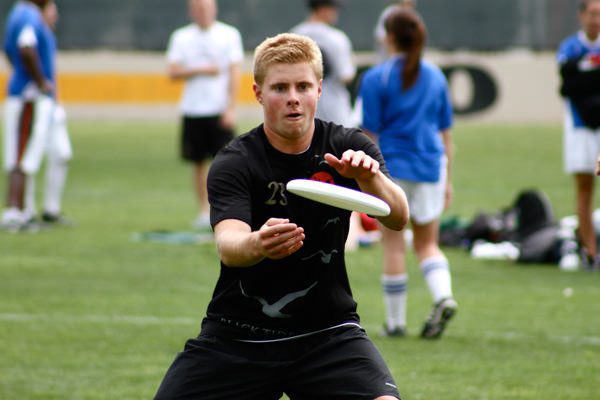Last week, we brought you a look at one of the world’s most under-appreciated sports, ice hockey. The reactions were so strong and positive that we’re doing it again by taking a closer look at Ultimate Frisbee’s Horizontal Stack. For new athletes to the sport, yes, throwing and catching are massively important, but understanding how to fit an offense, effectively move, and create opportunities are equally key. In Ultimate, there are two basic offenses: the Vertical or Horizontal Stacks; for beginners, you’re far more likely learn the Vert offense first because of its simplicity. However, it can be easy for those type of vanilla offenses to get shut down by force or cup defenses. Then, teams have to adjust by using the Horizontal Stack. If you’re looking to become a more complete Ultimate player, it truly starts with learning the nuances of this offensive set. As always, we’ve cherry picked our favorite section from our Training Center article on the subject to kick things off. If you’re still intrigued about the Horizontal offense, you can find the whole thing here.
Now, this is where the Horizontal Stack typically flourishes or fails — the cutters. These players must constantly be moving at all costs, remember, when you stand still, the defense has an impossibly easy job. In particular, you’ll want to have your athletes with the most endurance in the middle because they’re technically in two different thirds of the field. Ultimately, you’ll have three different pairs of cutters on the field during a horizontal stack — the first being the left + left-center pair, second being the left-center + right-center pair, and, finally, the right-center and right pair. When the disc is in any of those pairs’ zones, they must work in symphony in order to create space and stretch the defenders. For example: if the disc is in the middle of the field, the two center cutters need to moving in opposite directions at all times. As soon as the disc gets swung to the central Handler, one cutter must break towards the disc as the other cuts deep. If there’s no immediate throw, either deep or short, the Handler will either look to swing, dump, or reset. Then, the cutter who unsuccessfully came in, must move out of the middle, try to find open space, or cut deep. Once the deep cut is not used, he or she must also cut back in towards the Handler in order to recycle back into the space no longer used by their partner. As this happens, the former in-cut will go deep.
As for drills, a lot of your ability within this type of offense, especially as a cutter, will come from your endurance. Practice making deliberate and purposeful cuts up and down the field towards a partner with the disc. If he or she throws it your way, be sure to catch it, toss it back to your Handler, and then free up that space in the middle of the field. Rinse and repeat as much as possible, even if you get tired. Even if you get exhausted now, you’ll be that much better off in a real-game situation. I know, it’s a handful to analyze all at once, but it’s very similar to riding a bike. Once you learn and understand just that first time, then the rest will become second nature and muscle memory. It’s ultimately (ha!) all about putting yourself in positions to succeed and then creating space for others if you’re not open. If you learn these ideals and processes, implementing the rest of our suggestions as well, then you’ll be an expert at the Horizontal Stack no matter what position you’re playing in!
How useful was this post?
Click on a star to rate it!
Average rating 1 / 5. Vote count: 1
No votes so far! Be the first to rate this post.



